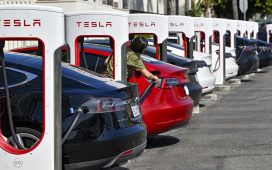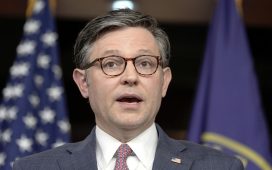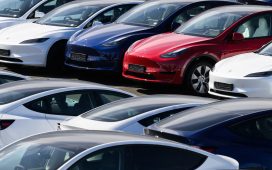Following a resounding victory at India’s parliamentary elections, Prime Minister Narendra Modi needs to improve the country’s manufacturing competitiveness to attract global investors, according to a top business leader.
For India to become a highly competitive manufacturing hub, several things still need to happen — including an improvement in infrastructure efficiency, compliance and the way the country’s public sector works, said R.C. Bhargava, chairman of Maruti Suzuki, one of India’s largest automobile manufacturers.
“This time, he has to make sure that India does become a highly competitive manufacturing hub, where global investors now look to India to invest,” he told CNBC’s Tanvir Gill in an interview on Saturday.
“Lots had been done but it’s not enough. Public sector controls a lot of factors, which go into manufacturing competitiveness. The efficiency and the levels at which the public sector functions are not necessarily globally competitive,” he said. For example, India’s public sector banks are trying to resolve bad debts that have hampered their ability to lend in recent years.
Another big weakness in India has been the ability to implement good policies, he added. “They tend to remain on paper more than they actually become reality on the ground. I think (Modi) has to work to remove the factors which make India such a poor implementer of projects and policies,” Bhargava said.
Modi’s landslide victory
Modi’s Bharatiya Janata Party snatched a resounding win in a single party majority with over 300 seats.
Analysts have said that the BJP’s dominance could give Modi a bit of maneuvering room within the National Democratic Alliance (NDA) coalition to push major reforms in areas such as land and labor — that are important for India’s long-term growth. But that’s expected to receive some push back, especially from the states.
The government’s lack of majority in the upper house of parliament and vested interest from state governments are likely to thwart immediate efforts to introduce those reforms, according to Priyanka Kishore, head of India and South East Asia economics at Oxford Economics.
State governments, Kishore explained in a recent note, can often follow a different agenda to the center — even if they belong to the same party — and “the initial experience with the labour reforms in the NDA’s first term showed.” Instead, she said, it is likely that Modi will temper expectations on those major reforms, focus on reviving short-term growth and maintain a favorable environment for businesses and investments.
Bhargava added that if the Reserve Bank of India cuts interest rates, it could help by reducing borrowing costs even though that’s not the main determinant of growth. “I think a lot of the growth also depends on how management of industry is carried out,” he said.
Auto sector’s growth potential
Earlier this month, data showed passenger vehicle sales in India dropped 17% in April, which was the worst monthly decline in almost eight years. Poor consumer sentiment, high insurance costs and the unavailability of liquid cash dented car sales, reports said.
That happened amid a global backdrop of slowing auto sales in major markets.
R.C. Bhargava, chairman of Maruti Suzuki India., gestures as he speaks during a news conference in New Delhi, India.
Anindito Muk | Bloomberg | Getty Images
Bhargava said that India’s auto sector, along with the rest of the economy, tends to slow down a year before elections before picking up again after the polls are conducted. That, he explained, is likely due to the uncertainty before the ballots are cast, as people tend to defer all purchases and investments until the final outcome is known.
The auto sales slowdown in India has “nothing to do with the fundamentals of the economy,” he added. “Things like the China-U.S. trade war, oil prices going up and down — these keep happening, it’s not unusual for this to happen.”
He said that India’s auto sector will remain the fastest growing car market for many years to come because it has a lot of distance to cover, while other major markets have become highly saturated, leaving them little room for growth.
“We’re about 25 cars per 1,000 (people). The USA is over 800, Europe is over 500, China has already reached 150. So, you see the difference,” he said.
— Reuters contributed to this report.








